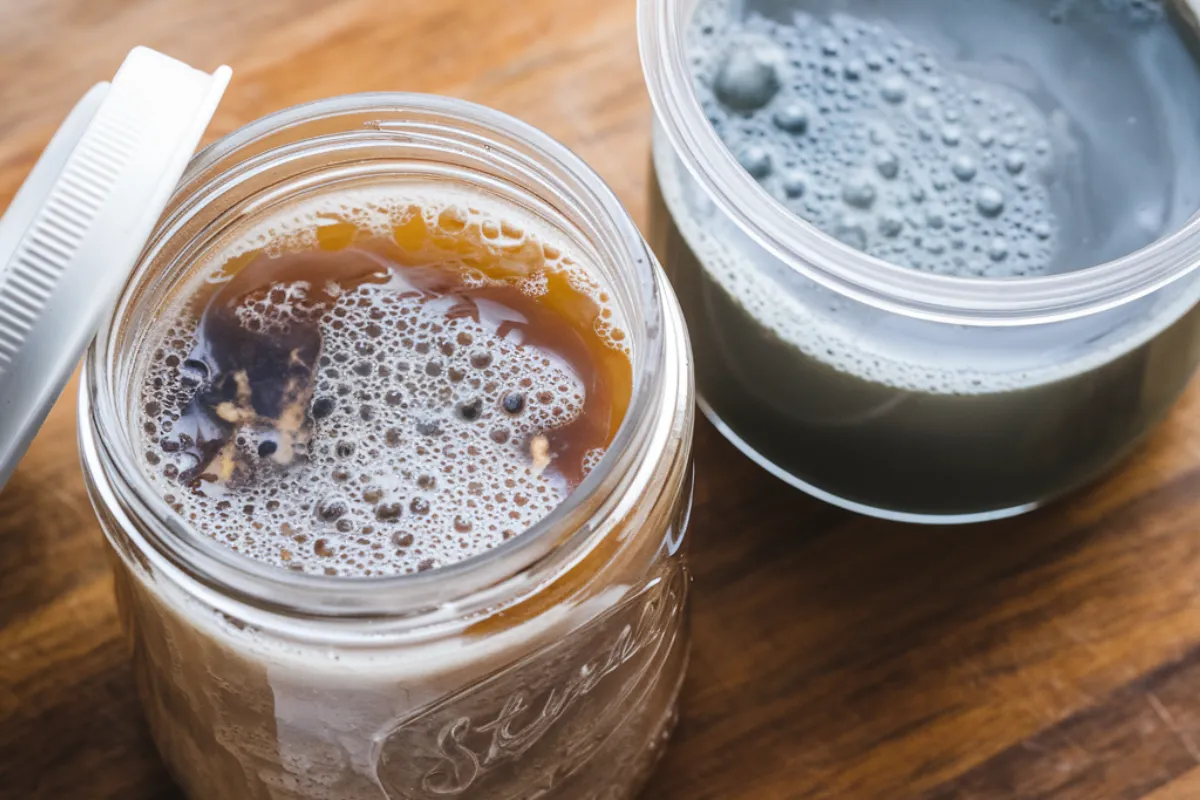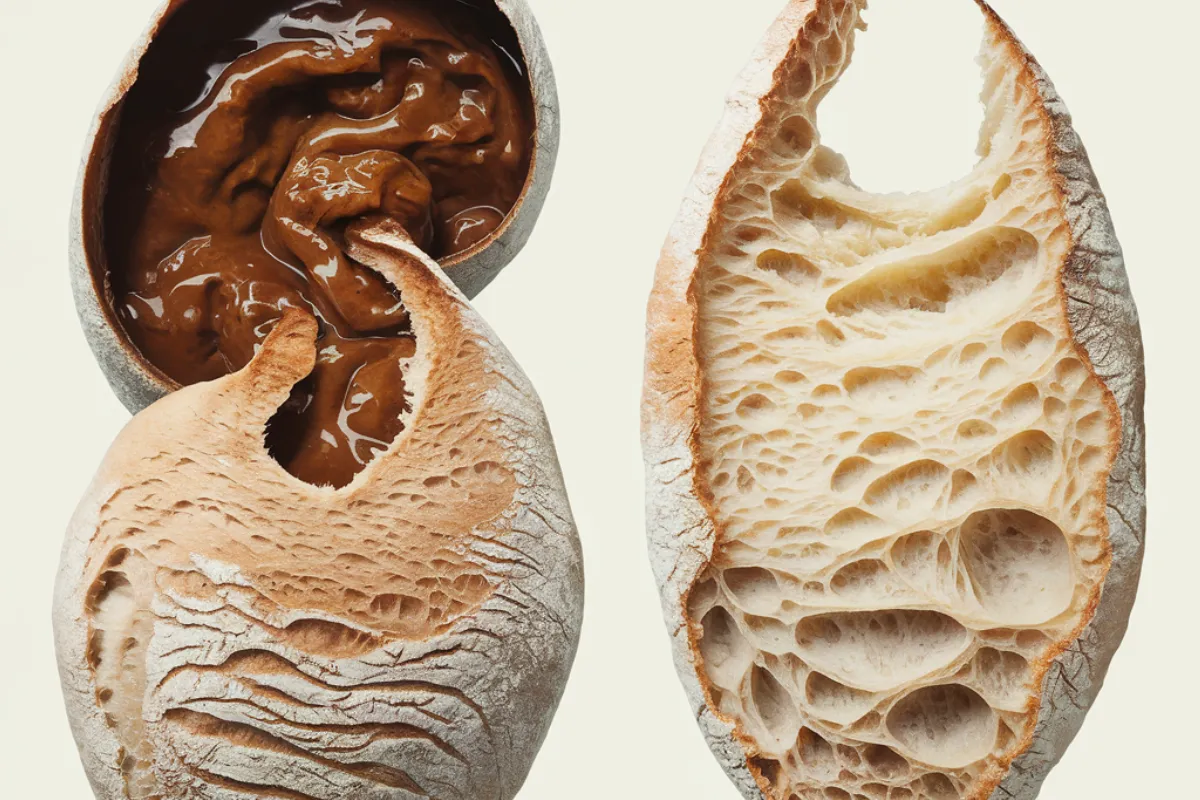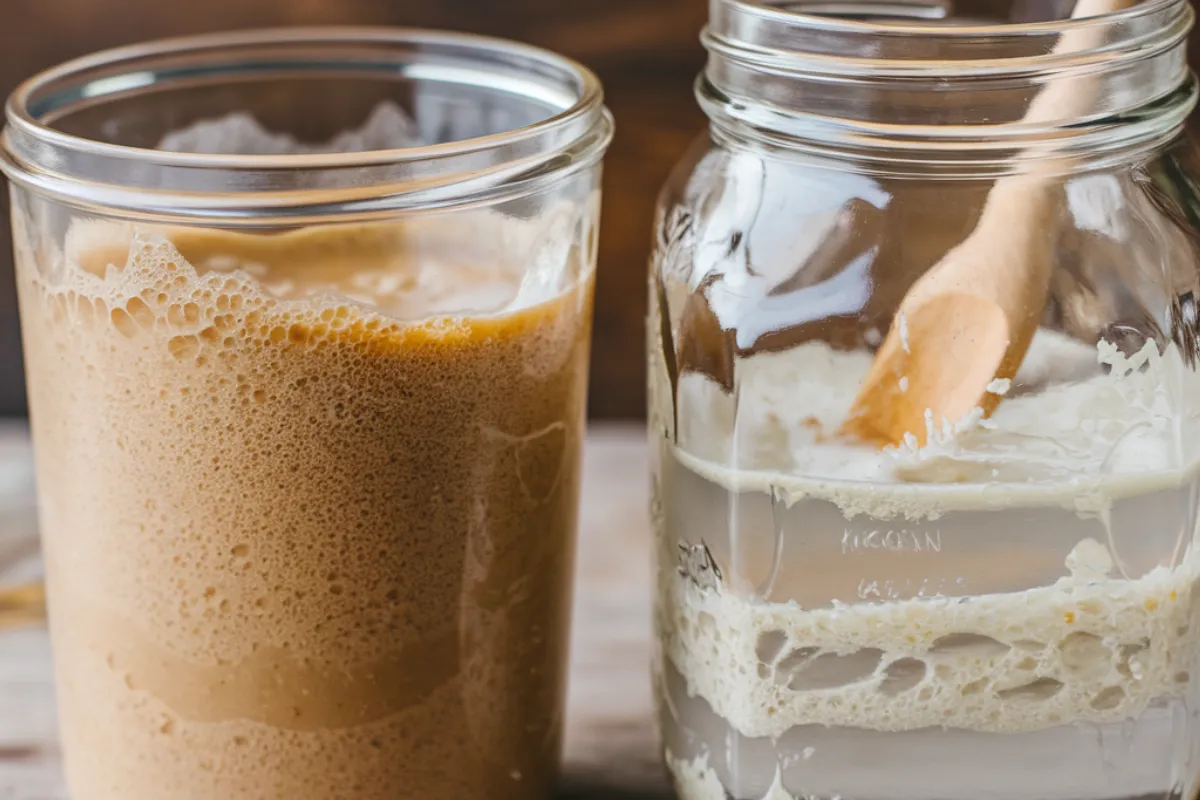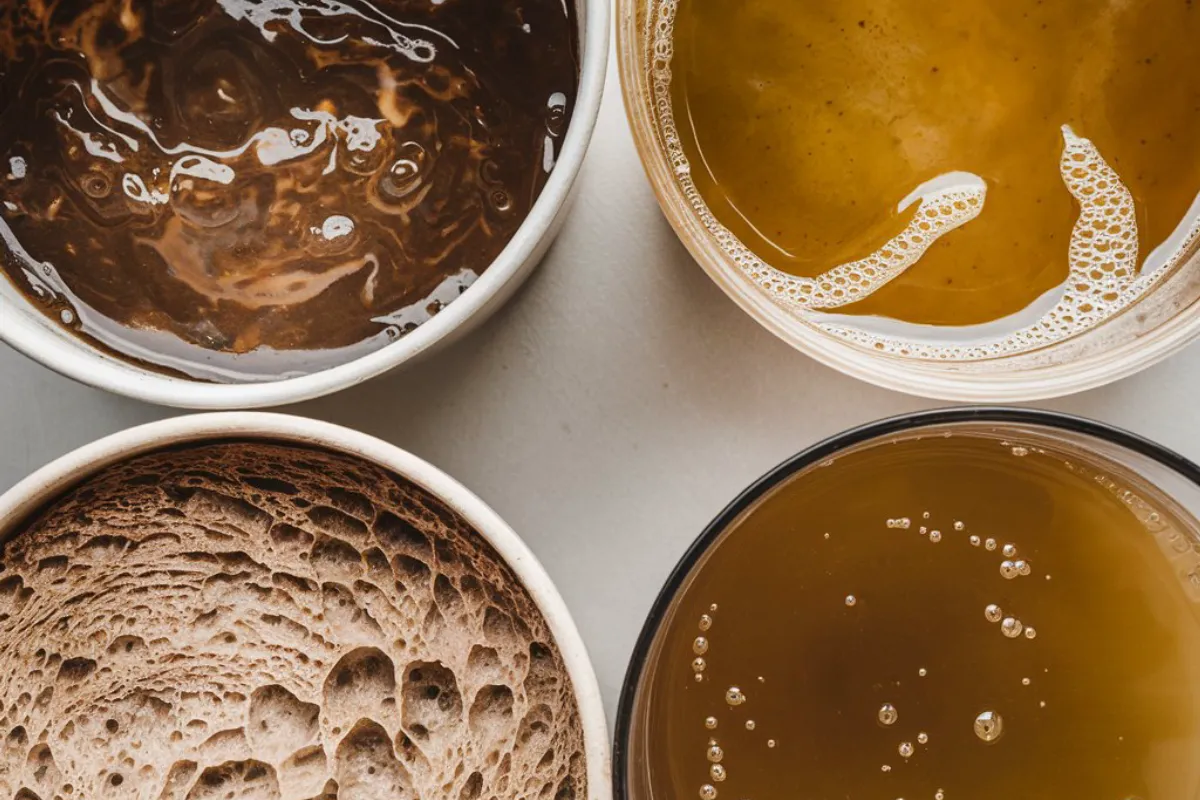
fermentation process and its rich, tangy flavors. Whether you’re new to the sourdough journey or even if you’re experienced, you’ve probably come across two important components: the sourdough starter and the sourdough discard. Although both are closely related, they have different roles and uses. Therefore, understanding the difference between these two can help you improve your sourdough baking and also make sure that you are using every part of the sourdough process to its full potential.
In this article, we’ll explore everything you need to know about sourdough starter and sourdough discard. Specifically, we’ll discuss their differences, how they work, how to use them, and why they are both essential parts of sourdough baking. Ultimately, by the end, you’ll know exactly how to handle both and avoid unnecessary waste in your kitchen. Additionally, if you’re looking for a guide on how to store your sourdough discard properly, check out this article on storing sourdough discard.
What is a Sourdough Starter?

The sourdough starter is the foundation of sourdough baking. It’s a living culture made from just two ingredients: flour and water. Over time, as this mixture sits at room temperature, wild yeast and beneficial bacteria from the air and the flour begin to colonize the mixture. These microorganisms work together to ferment the flour, breaking down the starches and sugars, which produces gases and acids. The gas released during fermentation is what helps bread rise, and the acids give sourdough its characteristic tangy flavor.
How a Sourdough Starter Works
To start the sourdough process, you mix equal parts flour and water. Over the course of several days, wild yeast and lactic acid bacteria develop in the mixture. The yeast consumes the sugars in the flour and releases carbon dioxide, which causes the dough to rise. The bacteria, particularly lactobacillus, produce lactic acid and acetic acid, which add flavor and help preserve the dough.
A key element of maintaining a sourdough starter is feeding it regularly. This means adding fresh flour and water to the mixture, which provides food for the yeast and bacteria to continue thriving. Without regular feedings, the starter will eventually run out of food, the yeast will weaken, and the bacteria will become overly dominant, making the starter too acidic to use.
For an in-depth guide to creating a sourdough starter from scratch, check out this comprehensive resource on sourdough starter recipes.
Maintaining a Sourdough Starter
Once your sourdough starter is active and healthy, it needs regular care. Feeding the starter every day ensures that the yeast stays alive and strong. The process of feeding is simple: discard about half of the starter and replace it with fresh flour and water. This regular feeding keeps the yeast well-fed and the bacteria balanced, ensuring the starter remains at its peak for baking.
If you’re not baking every day, you can store your starter in the refrigerator to slow down its activity. Starters stored in the fridge need to be fed once a week to keep them alive. Before using a refrigerated starter, it’s a good idea to bring it back to room temperature and feed it a few times to re-activate the yeast.
What is Sourdough Discard?
Sourdough discard is the portion of the sourdough starter that you remove before feeding it. Every time you feed your starter, you discard about half of it to keep the starter manageable and healthy. Without discarding, your starter would continue to grow indefinitely, which would make it more difficult to maintain and would lead to an imbalance in the fermentation process.
While it might seem like sourdough discard is a waste, it’s far from useless. Discard still contains beneficial bacteria and yeast, though not enough active yeast to leaven bread. Instead, sourdough discard can be used in a wide variety of recipes that don’t require yeast, such as pancakes, waffles, muffins, and crackers. This not only helps reduce waste but also adds a delicious sourdough tang to many dishes.
Why Discarding is Important
Discarding part of your starter ensures that the balance of yeast and bacteria stays in check. If you skip this step, the starter can become too acidic, which will affect its ability to raise dough. In fact, an overly acidic starter can cause your bread to have a dense crumb and a too-sour taste, which may not be desirable.
To learn more about why discarding is an essential part of maintaining a healthy starter, check out this detailed article on sourdough discard.
Key Differences Between Sourdough Starter and Discard

Although they originate from the same mixture, sourdough starter and sourdough discard serve different purposes in the kitchen. Let’s break down their key differences in more detail:
1. Leavening Power
- Sourdough starter: An active sourdough starter is full of wild yeast and lactic acid bacteria, which work together to make the dough rise. The yeast produces carbon dioxide, which creates gas bubbles in the dough, causing it to expand and become airy.
- Sourdough discard: Since discard is the portion of the starter that has not been fed, it lacks the yeast activity necessary to raise dough. While it still contains yeast and bacteria, it isn’t strong enough to make bread rise. However, it can be used to add flavor to non-leavened recipes.
2. Usage in Recipes
- Sourdough starter: Active starters are typically used in recipes that require fermentation and rising, such as:
- Sourdough bread
- Pizza dough
- Bagels
- Sourdough pretzels
- Sourdough discard: Discard is ideal for recipes that don’t require leavening or yeast activity. It works well in recipes such as:
- Pancakes
- Waffles
- Crackers
- Biscuits
- Quick breads
3. Fermentation and Flavor
- Sourdough starter: When maintained properly, a starter is continuously fermenting, which gives sourdough bread its signature tangy flavor. The fermentation process breaks down complex carbohydrates and proteins in the flour, making the bread easier to digest.
- Sourdough discard: While discard retains some of the flavors from the fermentation process, it doesn’t go through further fermentation. This makes it useful for adding a mild sour flavor to dishes but without the full effect of fermentation.
Using Sourdough Discard in Everyday Recipes
One of the biggest advantages of sourdough discard is its versatility. Instead of throwing it away, you can incorporate it into many easy recipes that take advantage of its tangy flavor. Here are some popular ways to use sourdough discard:
1. Sourdough Pancakes
Pancakes made with sourdough discard are fluffy, light, and have a slight tang that adds depth to the flavor.
- Recipe: Mix 200g sourdough discard, 1 cup flour, 2 eggs, 1 cup milk, and 1 tsp baking powder. Cook on a hot griddle until bubbles form, then flip and cook until golden brown. Serve with butter and syrup.
2. Sourdough Waffles
Waffles are another great way to use discard. The discard helps create a crispy exterior while keeping the inside soft and airy.
- Recipe: Mix 200g sourdough discard with flour, eggs, milk, and baking powder. Pour the batter into a preheated waffle iron and cook until golden and crispy.
3. Sourdough Crackers
Crackers made from sourdough discard are a perfect snack. They’re simple to make and can be seasoned with your favorite herbs and spices.
- Recipe: Mix 200g sourdough discard, 1 cup flour, 1/4 cup olive oil, and your choice of seasonings. Roll out the dough, cut into shapes, and bake at 350°F for about 15 minutes until crispy.
4. Sourdough Banana Bread
Banana bread made with sourdough discard has a unique depth of flavor. The tang of the discard balances out the sweetness of the bananas, creating a moist, flavorful loaf.
- Recipe: Mix 200g discard with 2 mashed bananas, 1 cup flour, 1 egg, and 1/2 cup sugar. Bake in a preheated oven at 350°F for 60 minutes, or until a toothpick comes out clean.
Is Sourdough Discard Healthy?
Sourdough discard may not be as active as a starter, but it still offers several health benefits. Here’s why using discard can be a healthy choice:
1. Probiotics for Gut Health
Sourdough discard contains beneficial bacteria, particularly lactobacillus, which can support gut health. These probiotics are important for maintaining a healthy gut microbiome, aiding digestion, and possibly improving immune function.
2. Nutritional Value
Sourdough discard retains many of the nutrients from the flour used to create the starter, such as B vitamins, iron, and magnesium. These nutrients contribute to overall health, especially for energy production, metabolism, and immune support.
3. Reducing Food Waste
Using sourdough discard in your recipes helps reduce food waste, making your sourdough baking more sustainable. Instead of throwing away the discard, you can use it to create delicious meals and snacks, ensuring that nothing goes to waste.
Frequently Asked Questions (FAQs) About Sourdough Starter and Discard

1. Can I use sourdough discard as a starter?
Yes, with regular feedings, sourdough discard can be reactivated and used as a starter. However, it will take several days of feeding to bring it back to full activity.
2. What happens if I don’t discard my sourdough starter?
If you don’t discard part of your starter, it will become too acidic. This can weaken the yeast, leading to dense bread and an overly sour flavor. Discarding helps maintain a balanced fermentation process.
3. Does sourdough discard offer the same health benefits as sourdough starter?
Sourdough discard retains some of the same beneficial bacteria and nutrients as the starter, but it doesn’t provide the full fermentation benefits. While it can still contribute to gut health and offer nutritional value, it lacks the yeast activity needed for leavening.
Conclusion
Understanding the difference between sourdough starter and sourdough discard is essential for anyone looking to master sourdough baking. Both are valuable tools in the kitchen, and while the starter is used for long-fermented recipes that require yeast, the discard is perfect for quick, flavorful dishes that don’t need a rise.
Next time you feed your sourdough starter, don’t toss the discard—it’s a versatile ingredient that can help reduce waste and add a delicious sourdough tang to your meals. With a little creativity, you’ll find that discard can be just as valuable as the starter itself.
